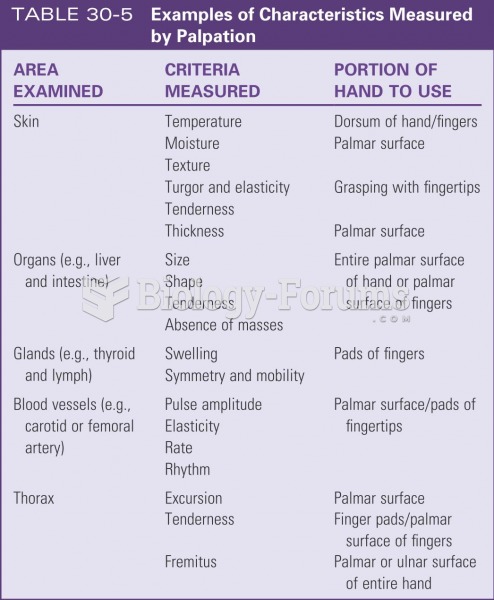Answer to Question 1
Central to the diagnosis of anorexia nervosa is a distorted body image that overestimates personal body fatness. Malnutrition and weight loss affect brain functioning and judgment in this way, causing lethargy, confusion, and delirium and influencing mood, anxiety, and emotions.
Bulimia nervosa is distinct from anorexia nervosa and is more prevalent, although the true incidence is difficult to establish because bulimia nervosa is not as physically apparent. More men suffer from bulimia nervosa than from anorexia nervosa, but bulimia nervosa is still more common in women than in men. The secretive nature of bulimic behaviors makes recognition of the problem difficult, but once it is recognized, diagnosis is based on such criteria as number and frequency of binge eating episodes, inappropriate compensatory behaviors to prevent weight gain (such as self-induced vomiting or misuse of laxatives), and self-evaluation unduly influenced by body shape and weight.
Answer to Question 2
An underweight person, especially an older adult, may be unable to preserve lean tissue during the fight against a wasting disease such as cancer or a digestive disorder, especially when the disease is accompanied by malnutrition. Without adequate nutrient and energy reserves, an underweight person will have a particularly tough battle against such medical stresses and face increased risks of mortality following surgeries. Underweight women develop menstrual irregularities and become infertile. Those who do conceive may give birth to unhealthy infants. An underweight woman can improve her chances of having a healthy infant by gaining weight prior to conception, during pregnancy, or both. Underweight and significant weight loss are also associated with osteoporosis and bone fractures. For all these reasons, underweight people may benefit from enough of a weight gain to provide an energy reserve and protective amounts of all the nutrients.
As for excessive body fat, the health risks are so many that it has been designated a diseaseobesity. Among the health risks associated with obesity are diabetes, hypertension, cardiovascular disease, sleep apnea (abnormal ceasing of breathing during sleep), osteoarthritis, some cancers, gallbladder disease, kidney stones, respiratory problems (including Pickwickian syndrome, a breathing blockage linked with sudden death), infertility, and complications in pregnancy and surgery. Obese people are more likely to be disabled in their later years. Each year, these obesity-related illnesses cost our nation 147 billionin fact, as much as, or more than, the medical costs of smoking. An additional 73 billion is estimated in a loss of productivity at work due to mortality and disability. The cost in terms of lives is also great. In fact, obesity is second only to tobacco in causing premature deaths.







